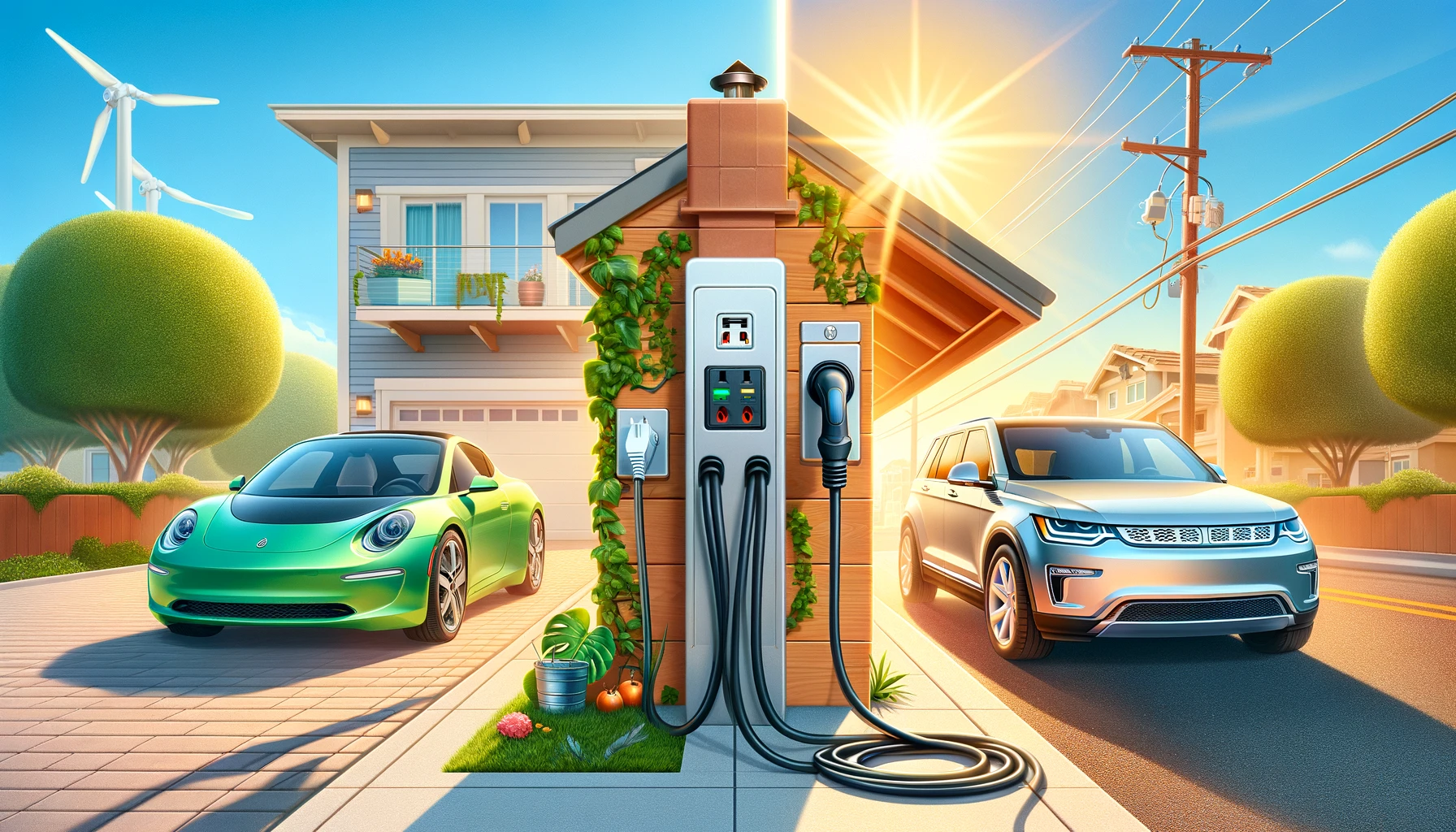Introduction
Hey there, future-forward Californians! Ready to juice up your shiny electric vehicle (EV)? Great! But before you do, let’s chat about a choice that might seem as perplexing as picking the right avocado at the grocery store: hardwired or plug-in EV chargers. And in the Golden State, this decision gets extra zesty thanks to our buddy, the GFCI breaker.
Meet the GFCI Breaker: Your Electrical Lifeguard
Imagine a GFCI (Ground Fault Circuit Interrupter) breaker as that vigilant lifeguard at the beach, always on the lookout. This nifty device keeps an eagle eye on your electricity flow. If it spots something fishy, like electricity trying to take an unscheduled swim through you (yikes!), it shuts things down faster than you can say “California roll.” Safety first, folks!
The Charger Face-Off: Hardwired vs. Plug-In
Team Hardwired
- Installation: Like a trusty fridge, hardwired chargers are installed and ready to chill. They’re part of your home’s electrical lineup, installed by someone who knows their volts from their watts.
- Reliability: These chargers are as steady as your favorite yoga instructor – consistent and balanced, with no GFCI breaker to stir the pot.
Team Plug-In
- Installation: Plug-in chargers are the nomads of the charging world. Got a 240V outlet? Plug it in, and voilà! It’s like an electric kettle but for your car.
- Flexibility: Fancy a change of scenery? You can unplug and replug elsewhere. It’s like an electrical game of musical chairs.
- GFCI Requirement: Here’s the twist – in California, these chargers need to tango with a GFCI breaker, which can lead to a quirky little dance known as…
Nuisance Tripping: The Electric Tango
Nuisance tripping is like that overzealous party guest who turns off the music at every tiny sound. GFCI breakers, bless their cautious hearts, can mistake the normal hum of your charger for a problem and cut the power, leaving you to wander out in your pajamas to reset it. Not exactly the midnight adventure you had in mind.
Manufacturers’ Two Cents: “Go Hard(wired) or Go Home”
To swerve around this GFCI-induced tango, many charger manufacturers are waving team flags for Team Hardwired. Why? Because these chargers bypass the whole GFCI kerfuffle, offering a smoother charging experience without those unexpected “no-juice” plot twists.
Conclusion
Choosing between hardwired and plug-in chargers in California is like deciding between a burrito or a taco – both are deliciously great, but one might just hit the spot for your specific cravings (and your tolerance for those GFCI-related shenanigans). On one hand, hardwired setups offer the reliability and smooth sailing of a GFCI-free life, while plug-ins come with the bonus of flexibility, albeit with a side dish of potential nuisance tripping.
No matter which path you choose, you’re zooming down the eco-friendly highway in style – just keep your eyes peeled for those pesky electrical speed bumps along the way! And hey, if you find yourself pondering over the charger menu, scratching your head about amperage, or just feeling tangled in GFCI questions, don’t sweat it! EV Electric is here to answer all your burning queries. Think of us as your trusty co-pilots on this electrifying road trip. We’re here to guide, advise, and ensure your charging journey is as smooth as a coastal California drive. So, plug in or hardwire up, amigos – happy charging, and remember, EV Electric is always here to lend a helping hand (or a charging cable)!


Thank you for your sharing. I am worried that I lack creative ideas. It is your article that makes me full of hope. Thank you. But, I have a question, can you help me?
I don’t think the title of your article matches the content lol. Just kidding, mainly because I had some doubts after reading the article.
Your point of view caught my eye and was very interesting. Thanks. I have a question for you.
Your point of view caught my eye and was very interesting. Thanks. I have a question for you.
I don’t think the title of your article matches the content lol. Just kidding, mainly because I had some doubts after reading the article.
Thank you for your sharing. I am worried that I lack creative ideas. It is your article that makes me full of hope. Thank you. But, I have a question, can you help me?
I don’t think the title of your article matches the content lol. Just kidding, mainly because I had some doubts after reading the article.
I don’t think the title of your article matches the content lol. Just kidding, mainly because I had some doubts after reading the article.
I don’t think the title of your article matches the content lol. Just kidding, mainly because I had some doubts after reading the article.
Your point of view caught my eye and was very interesting. Thanks. I have a question for you.
Can you be more specific about the content of your article? After reading it, I still have some doubts. Hope you can help me.
I like this website very much, Its a real nice post
to read and obtain information.Raise blog range
Thanks for sharing. I read many of your blog posts, cool, your blog is very good.
Thanks for sharing. I read many of your blog posts, cool, your blog is very good.
Thanks for sharing. I read many of your blog posts, cool, your blog is very good.
fantastic put up, very informative. I ponder why the opposite experts of this sector don’t understand this. You should proceed your writing. I am confident, you have a great readers’ base already!
Can you be more specific about the content of your article? After reading it, I still have some doubts. Hope you can help me. https://www.binance.com/en/register?ref=JHQQKNKN
I don’t think the title of your article matches the content lol. Just kidding, mainly because I had some doubts after reading the article.
Your article helped me a lot, is there any more related content? Thanks! https://accounts.binance.com/zh-CN/register?ref=VDVEQ78S
Thanks for sharing. I read many of your blog posts, cool, your blog is very good.
I don’t think the title of your article matches the content lol. Just kidding, mainly because I had some doubts after reading the article.
I don’t think the title of your article matches the content lol. Just kidding, mainly because I had some doubts after reading the article.
tyew1s
Can you be more specific about the content of your article? After reading it, I still have some doubts. Hope you can help me. https://accounts.binance.com/es-MX/register-person?ref=JHQQKNKN
Your point of view caught my eye and was very interesting. Thanks. I have a question for you.
Thanks for sharing. I read many of your blog posts, cool, your blog is very good. https://accounts.binance.com/cs/register?ref=S5H7X3LP
Your article helped me a lot, is there any more related content? Thanks! https://www.binance.info/join?ref=P9L9FQKY
Thanks for shening. I read many of your blog posts, cool, your blog is very good.
I don’t think the title of your article matches the content lol. Just kidding, mainly because I had some doubts after reading the article.
I don’t think the title of your article matches the content lol. Just kidding, mainly because I had some doubts after reading the article.